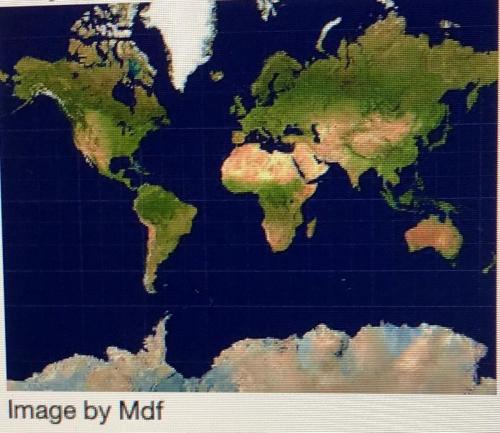 1
1 The rock cycle describes the way that rock material cycles through Earth's crust.
All rocks start out as lava or magma that cools into igneous rock.
Explanation:
The Rock Cycle is a process in Earth's crust of creating and forming different types of rocks. Through this process, three primary rocks are formed: Igneous rock, Sediment rocks, and metamorphic rocks.
From the given statements, the statements which are not true about the rock cycle are:
First one, the rock cycle does not desrcibe the way rock material cycles through Earth's crust but it is a process which creates and transforms different types of rocks.
Second statement is also wrong, because only igneous rocks starts out as lava or magma.
Therefore, statement first and second are not true.
Metamorphism often occurs on two scales: contact and regional. Contact metamorphism occurs relatively locally, in areas adjacent to igneous intrusions or in areas that are in contact with hot water known as hydrothermal fluids.
Typically this kind of metamorphism is caused by moderate pressure and extreme heat that may last for a period of days to thousands of years. In cases of contact metamorphism, the most extreme metamorphism occurs at the contact point between the parent rock and the intrusive magma or hydrothermal fluid. The degree of metamorphism then decreases rapidly as distance from the heat source increases. Depending on the source, zones of contact metamorphism may range from a few millimeters to tens of meters.
In contrast to contact metamorphism, regional metamorphism occurs over much larger areas. In areas such as rising mountain ranges, large igneous intrusions can form and warp overlying strata increasing the pressures above the intrusion. Also the extreme heat and pressures caused by tectonic forces or deep burial will cause widespread metamorphism.
and here's a link(you cant report me because i took a picture of the link, so ha-ha)

The rock cycle describes the way that rock material cycles through Earth's crust.
All rocks start out as lava or magma that cools into igneous rock.
Explanation:
The Rock Cycle is a process in Earth's crust of creating and forming different types of rocks. Through this process, three primary rocks are formed: Igneous rock, Sediment rocks, and metamorphic rocks.
From the given statements, the statements which are not true about the rock cycle are:
First one, the rock cycle does not desrcibe the way rock material cycles through Earth's crust but it is a process which creates and transforms different types of rocks.
Second statement is also wrong, because only igneous rocks starts out as lava or magma.
Therefore, statement first and second are not true.
Metamorphism often occurs on two scales: contact and regional. Contact metamorphism occurs relatively locally, in areas adjacent to igneous intrusions or in areas that are in contact with hot water known as hydrothermal fluids.
Typically this kind of metamorphism is caused by moderate pressure and extreme heat that may last for a period of days to thousands of years. In cases of contact metamorphism, the most extreme metamorphism occurs at the contact point between the parent rock and the intrusive magma or hydrothermal fluid. The degree of metamorphism then decreases rapidly as distance from the heat source increases. Depending on the source, zones of contact metamorphism may range from a few millimeters to tens of meters.
In contrast to contact metamorphism, regional metamorphism occurs over much larger areas. In areas such as rising mountain ranges, large igneous intrusions can form and warp overlying strata increasing the pressures above the intrusion. Also the extreme heat and pressures caused by tectonic forces or deep burial will cause widespread metamorphism.
and here's a link(you cant report me because i took a picture of the link, so ha-ha)

Option (A)
Explanation:
Tufa is a sedimentary limestone rock which is primarily comprised of calcium carbonate (CaCO₃). It is pore spaces in it. It is primarily formed from the precipitation of calcite, either chemically or biologically, which are derived frm the surface water or the ground water.
This type of sedimentary rock is formed from the deposition of materials or sediments that are carried by the rivers into the deeper zone of ocean, and after compaction and lithification, forms the rock called 'Tufa'.
Thus, the correct answer is option (A).
Option (A)
Explanation:
Tufa is a sedimentary limestone rock which is primarily comprised of calcium carbonate (CaCO₃). It is pore spaces in it. It is primarily formed from the precipitation of calcite, either chemically or biologically, which are derived frm the surface water or the ground water.
This type of sedimentary rock is formed from the deposition of materials or sediments that are carried by the rivers into the deeper zone of ocean, and after compaction and lithification, forms the rock called 'Tufa'.
Thus, the correct answer is option (A).

Thus question lacks a picture or option, but nevertheless:
Answer:
There are 3 types of friction:1) Static friction - when you apply force and the object does not move.2) Sliding friction - when the surface if the object moves on other.3) Rolling friction - when any wheel or ball moves on any surface rolling friction is applied. it is very less than sliding friction.

It will provide an instant answer!
